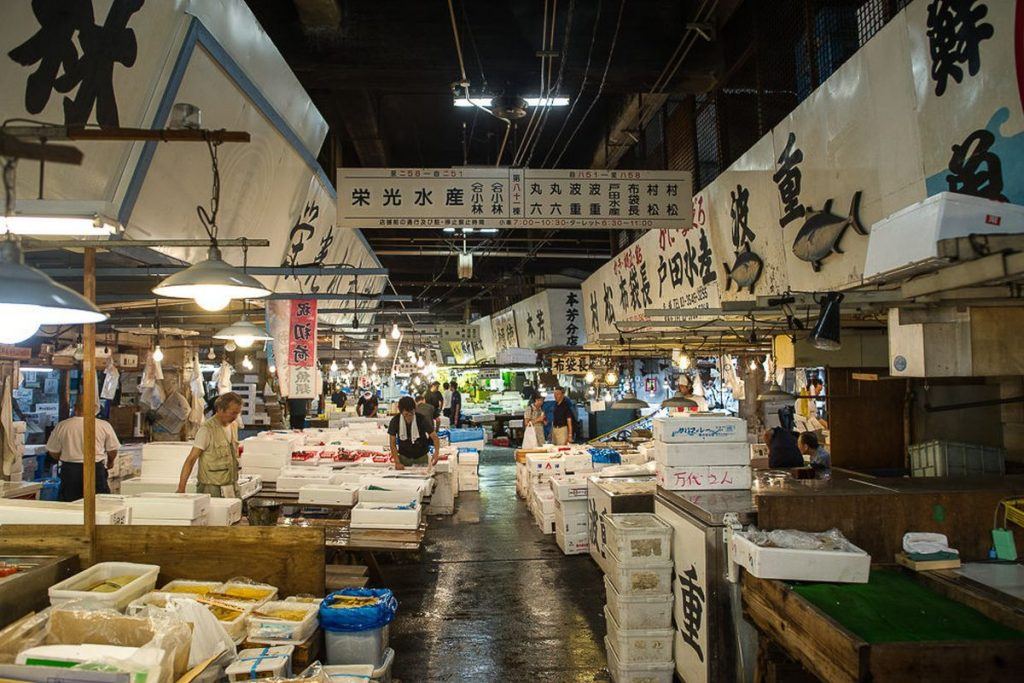
The market opened on 11 February 1935 as a replacement for an older market that was destroyed in the 1923 Great Kantō earthquake. It closed on 6 October 2018 and moved to the new Toyosu Market, 2.4 kilometres (1.5 mi) away.
The market was located in Tsukiji in central Tokyo between the Sumida River and the upmarket Ginza shopping district. When the inner wholesale market was operational, it offered only restricted access to visitors.

The inner market (jōnai-shijō) was the licensed wholesale market, where approximately 900 licensed wholesale dealers operate small stalls and where the auctions and most of the processing of the fish take place.


The outer market (jōgai-shijō) is a mixture of wholesale and retail shops that sell Japanese kitchen tools, restaurant supplies, groceries, and seafood, and many restaurants, especially sushi restaurants.
.jpg)

Most of the shops in the outer market closed by the early afternoon. In the inner market visitors were only allowed in by 10.00 am (11.00 pm by the time the market was moved), by which time the activity in the market had reduced significantly or almost ceased. A small number of visitors however were allowed into the inner market in the early morning to see the tuna auction.

The market handled more than 480 different kinds of seafood as well as 270 types of other produce, ranging from cheap seaweed to the most expensive caviar, and from tiny sardines to 300 kg tuna and whale species.
Overall, more than 700,000 metric tons of seafood are handled every year at the three seafood markets in Tokyo, with a total value in excess of 600 billion yen (approximately 5.4 billion US dollars on August 28, 2018).
At Tsukiji, around 1,628 tons of seafood worth 1.6 billion yen ($14 million) may be sold on a typical day.There were around 900 licensed dealers at the market, and the number of registered employees varied from 60,000 to 65,000, including wholesalers, accountants, auctioneers, company officials, and distributors
According to en.wikipedia






![[WORLDKINGS] Top 100 famous markets in the world – P3 – Yiwu Market (China): World’s largest small commodities market](https://worldmark.world/wp-content/uploads/2020/10/tgdtgu-218x150.jpg)
![[WORLDKING] Top 100 famous markets in the world – P1 – Rungis International Market (France) : World’s largest fresh product market](https://worldmark.world/wp-content/uploads/2020/10/ik-218x150.jpg)




